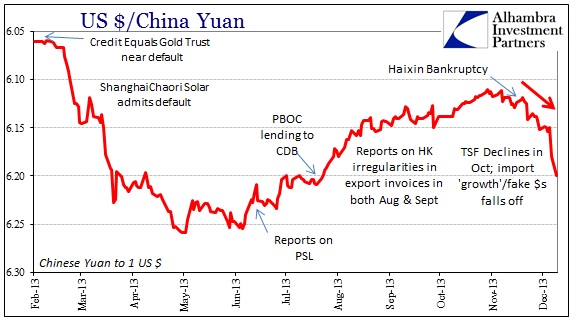For months now, really going back to the summer, the obvious decline in Chinese economic function has produced a resounding expectation that the PBOC would come to the rescue. It was taken axiomatically such was this Pavlovian reflex. Everything the PBOC did over the summer was characterized in that context: the introduction of the PSL and its implementation largely with China Development Bank were seen as monetary “stimulus.”
Of course, the bigger picture remains one where the PBOC is totally omniscient if not with full regard to the economy than certainly lording over all of the Chinese financial system. Conventional “wisdom” is monolithic especially among economists that a central bank will always and everywhere seek to maximize growth no matter what. The PSL was taken under that perception.
Economists and many “markets” are this morning in total disarray after the PBOC “shocked” by tightening (repo collateral in the extreme). It was only a few weeks ago when the central bank was supposed to have confirmed all orthodox expectations of “looser” policy.
None of what has transpired this year should have been a surprise to anyone. The PBOC has been saying publicly for more than a year about what it was going to doing. The bank’s own governor warned as much back in February that reform was to come first before even economic conditions; and Zhou Xiaochuan wasn’t all that sure what that might mean.
If you look at the behavior of the yuan, for example, PBOC’s playbook is revealed quite well. Contained within “reform” was the first of what was warned to be many defaults. The response was overwhelming and out of PBOC’s comfort as “dollar” tightening to China’s corporate sector demonstrated the very real downside of “reform.” The response was a curious end to the defaults and then rumors and implementation of “targeted” measures (PSL). That satisfied the “market” as it seemed to be PBOC relenting on its prior plans.
But this was never going to be a linear process, as nothing ever really is. The “dollar” problem in February and March was just the first iteration. What came after was actually “fine-tuning” but not of monetary loosening, rather of this reform idea. Over the summer the PBOC was making adjustments to make sure that the “right” parts of the financial apparatus would be fully liquefied. This was very telling as the extrapolation of such a move is that the PBOC was concerned only about the “good” parts of the system during less than ideal circumstances (as shown in February and March). In other words, they were preparing for the next stage of “reform.”
Having fortified the “good”, or as near to what they can designate and implement as such, conditions altered during the global dollar tightening that began in early July. China was curiously absent as a focal point and by autumn the rumors of Hong Kong fakery offered a compelling reason for that. However, by October (as we found out recently) this disguised dollar flow likely ceased (there is no way to tell if that was under order or on its own) as Chinese imports collapsed.
And then came the next default, as steelmaker Haixin turned to bankruptcy in mid-November. The movement of the yuan/dollar cross since then mimics the trend from February and March, which only amplified the orthodox expectation of further “loosening.” The PBOC responded with “reform” rather than “maximize growth” just as it has been doing and openly proclaiming all year. They are engaging in a stepped process aimed at taking air out of their massive asset bubbles. “Reform” is a euphemism for dealing with asset inflation on a historic scale.
That means not only is China eschewing broad liquidity expansion contrary to what is so often proclaimed, but rather the PBOC is actually recognizing, as are most other central banks, just how ineffective monetarism has been and can be. Furthermore, they are also under less illusion about the high cost of past monetarism, now looking to try to “thread the needle” of some monetary expansion that will not disturb the housing sector (bubble) in either direction. Call it managed decline or targeted growth without bubbles; whatever it is, it is a preposterous-sounding position to take.
Now that they have tightened so radically in the repo market there can no longer be any doubt (not that there was any before to anyone outside of the orthodox ideology) about what is taking place in China. While mainstream economic observers and far too many financial participants remain stuck in 2010, central banks have evolved (though not enough). It is very revealing that the biggest priority in China right now is not growth but asset bubbles. That is a concern that is shared far more broadly even in central banking than anyone seems to want to recognize. The worst case economic scenario is not global recession; it is global recession with global asset bubbles.



